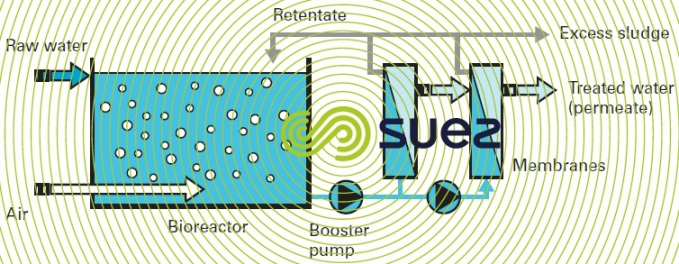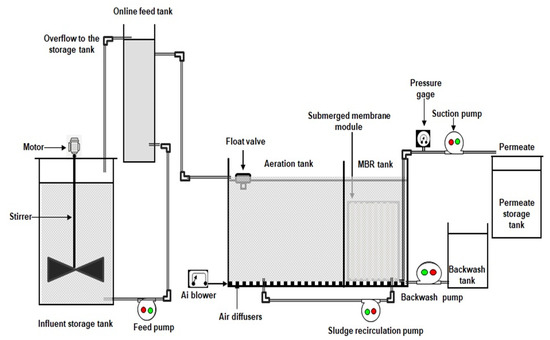Membrane Bioreactors Clarified: Effective Solutions for Clean Water
Membrane layer bioreactors (MBRs) have actually emerged as an advanced service for resolving the pressing challenges of wastewater therapy. By incorporating biological procedures with sophisticated membrane purification, MBRs not only boost the top quality of treated water however also reduce the spatial demands of therapy centers. As ecological issues escalate, the function of MBR modern technology in advertising lasting water administration comes to be significantly considerable. Nonetheless, the intricacies of their procedure, advantages, and prospective applications warrant a closer exam to completely comprehend their influence on the future of water treatment.

What Are Membrane Layer Bioreactors?
Membrane bioreactors (MBRs) are sophisticated wastewater treatment systems that incorporate biological destruction processes with membrane purification technology. This combination enables the effective removal of impurities from water, making MBRs a preferred selection in numerous applications, consisting of municipal wastewater treatment and industrial effluent monitoring.

One of the important benefits of MBRs is their ability to produce high-quality effluent, usually suitable for reuse in watering or industrial processes. Furthermore, MBRs need a smaller impact compared to conventional treatment systems, making them perfect for city settings where space might be restricted.
Additionally, MBRs can successfully handle varying influent lots and are much less at risk to the impacts of harmful shocks. These characteristics contribute to their expanding popularity as a lasting option for addressing the boosting need for clean water while decreasing environmental influences.
Exactly How Membrane Layer Bioreactors Job
While the procedure of membrane layer bioreactors (MBRs) might appear facility, it basically focuses on the harmony in between organic processes and membrane layer filtration. MBRs incorporate an organic therapy process, generally activated sludge, with a membrane layer separation device to deal with wastewater effectively.
In an MBR system, wastewater is first presented right into a bioreactor where bacteria deteriorate raw material and various other contaminants. The biological activity reduces the focus of contaminants while advertising the development of biomass. Following this organic treatment, the blended alcohol goes through membrane filtration, which can be microfiltration or ultrafiltration, depending upon the preferred effluent top quality.
The membranes act as a physical barrier, permitting water and small solutes to pass while preserving put on hold solids and larger molecules. This makes it possible for the system to keep a high focus of biomass within the reactor, boosting the therapy effectiveness.
Furthermore, the continual splitting up of cured water from the biomass assists in a portable layout and reduces the impact of the treatment center. On the whole, the combination of organic destruction and membrane filtering in MBRs causes trusted and efficient wastewater therapy, making sure high-quality effluent ideal for numerous applications.
Benefits of MBR Modern Technology
Among the vital benefits of membrane layer bioreactor (MBR) modern technology is its capability to create premium effluent with a dramatically minimized impact compared to conventional wastewater therapy techniques. MBR systems successfully incorporate biological therapy and membrane Web Site purification, resulting in superior elimination of impurities, consisting of suspended solids, virus, and raw material. This ability leads to effluent that frequently fulfills or exceeds stringent regulatory standards for reuse and discharge.
In addition, MBR modern technology permits higher biomass concentrations, which enhances the treatment efficiency and minimizes the called for reactor quantity. This portable design is particularly beneficial in urban locations where room is limited. The operational flexibility of MBR systems additionally implies they can adapt to varying influent top qualities and circulation rates, making them ideal for a large range of applications.
Additionally, the reduced sludge manufacturing linked with MBR procedures adds to lower operational and maintenance prices. The membrane layers work as a physical barrier, decreasing the danger of clogging and allowing longer functional periods in between cleaning. Generally, the advantages of MBR innovation make it an attractive service for sustainable wastewater therapy, addressing both ecological worries and the need for effective source management.
Applications of Membrane Bioreactors
With their convenience and effectiveness, membrane bioreactors (MBRs) locate applications throughout numerous markets, including municipal wastewater treatment, commercial procedures, and even water recovery. In local settings, MBRs give a small remedy for dealing with wastewater, effectively removing pollutants while simultaneously generating top notch effluent that fulfills stringent governing requirements. This makes them especially suitable for areas with minimal space.
In industrial applications, MBR modern technology is utilized for treating procedure water, especially in sectors such as food and beverage, drugs, and petrochemicals. These sectors take advantage of MBRs' capacity to manage high organic loads and their effectiveness in recuperating useful sources from wastewater, such as nutrients and water.
Furthermore, MBRs play an essential duty in water recovery efforts, making it possible for the reuse of dealt with wastewater for watering, industrial procedures, and even as drinkable water after additional therapy (Membrane Bioreactor). Their effectiveness in eliminating pathogens and contaminants makes them a dependable choice for making certain water high quality in different reuse applications
Future of Water Therapy Solutions
The future of water treatment options is poised for transformative developments driven by technical development and raising environmental awareness. As global water deficiency becomes a pushing concern, new approaches, consisting of membrane layer bioreactor (MBR) systems, are set to play a pivotal duty in boosting the performance and sustainability of water treatment processes.
Arising modern technologies such as man-made intelligence and artificial intelligence are expected to maximize therapy operations, enabling real-time tracking and predictive maintenance. browse around here This will enhance the total reliability and performance of water treatment facilities. Developments in membrane products, such as graphene and nanofiltration, guarantee to increase permeation prices and reduce fouling, leading to reduced power consumption and functional prices.
In addition, the combination of renewable power sources right into water therapy plants will certainly contribute to greener techniques. The circular economy design will certainly likewise obtain traction, encouraging the recovery of valuable sources from wastewater, such as nutrients and power.
Conclusion

Membrane bioreactors (MBRs) have emerged as an innovative solution for resolving the pushing challenges of wastewater therapy. By integrating organic processes with sophisticated membrane layer filtration, MBRs not just improve the quality of cured water however likewise minimize the spatial demands of treatment facilities.One of the vital benefits of membrane bioreactor (MBR) technology is its ability to create top quality effluent with a considerably lowered impact contrasted to conventional wastewater treatment methods.With their versatility and efficiency, membrane bioreactors (MBRs) find applications across various fields, consisting of local site web wastewater treatment, commercial processes, and even water recovery.In verdict, membrane bioreactors represent a substantial advancement in wastewater therapy innovation, integrating biological processes with efficient membrane layer purification to produce premium effluent.